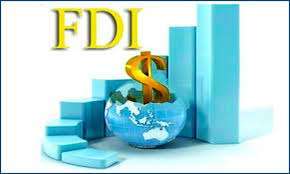
Everyone should know full forms of words related to everyone. This page provides best full form and tells what is the full form of FDI. So your search for FDI full form is over. Page is dedicated to a basic full form. Go through and get meaning of FDI
FDI — Foreign Direct Investment
Abbreviation or Full Form of FDI
FDI Full-Form refers to Foreign Direct Investment. FDI is primarily an investment made by a foreign investor in a business or a company. The investor purchasing a company or an organization has a certain percentage of control over it. According to the OECD or Organization of Economic Corporation and Development, this percentage amounts to ten percent or more. The businesses that are engaged in foreign direct investment are referred to as the MNEs or multinational enterprises and MNCs or Multinational companies. An MNE can directly invest by establishing a new enterprise (foreign). This kind of investment is known as Greenfield investment.
An MNE can also acquire a foreign firm, which is called a Brownfield investment or acquisition. The advantages, as well as the disadvantages of the FDI, usually depend on the viewpoint. An MNE can obtain a large number of benefits from an FDI, but the same cannot be said for the foreign nation where the MNE invested. There are certain times where the FDI gives better results to the foreign nation. If an FDI is seen in an ideal situation, it provides benefits to the foreign nation as well as the MNE.
FDI provides an excellent way of entering into the markets of foreign countries. However, some nations may put numerous limitations on the access of foreign companies in their markets. Another benefit of the FDI is that it is a highly effective method for acquiring natural resources like fossil fuels and precious metals. The FDI can also prove effective in reducing the production cost. This benefit is present in nations where the labour market is cheap, and the rules and regulations regarding the access to the domestic market of the foreign nationals are lesser restrictive.
Finally, FDI helps by exposing the local and the national governments of the foreign nation, its citizens and local businesses to new practices of business, technology, economic concepts, and management techniques. This exposure goes a long way in developing the local industries and businesses.
Investment from one country to another by an organisation or a company is termed as foreign direct investment. In the process of FDI, a company acquires tangible assets by carrying out operations from one country to another. The tangible assets include both fixed assets as well as current assets.
FDI is of two types which include the following –
Horizontal – In horizontal FDI a company works in a similar fashion across several countries, i.e. the company may establish various branches in other countries but functions in a similar manner as the way it functions in its home county. For example, let us consider a leading brand of cars such as Toyota which assembles cars in both Japan as well as the UK.
Vertical
- Forward Vertical – When a company wants to establish its brand across several countries, it has to populate its brand by supplying its product in other countries. For this purpose, it takes up a distributorship in other countries, and hence carries out a sale of its products. For example, Fiat takes a distributorship in India to populate its brand.
- Backward Vertical – Development of a product depends on several constraints such as raw material, machinery and so on depending on the type of the product. So for this purpose, a company can acquire raw material or machinery from other countries
Download the above Full-Form in PDF (Printable)
